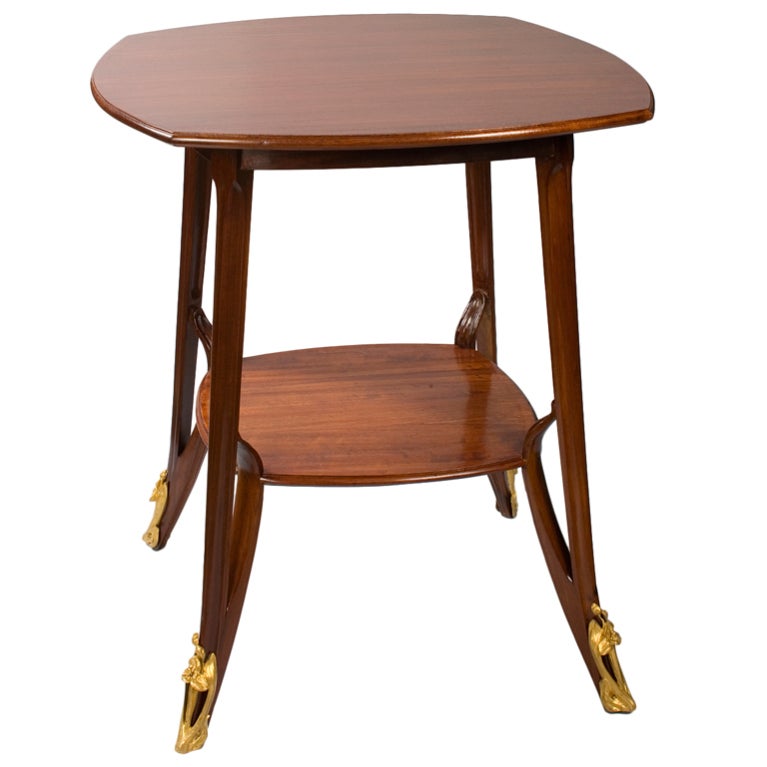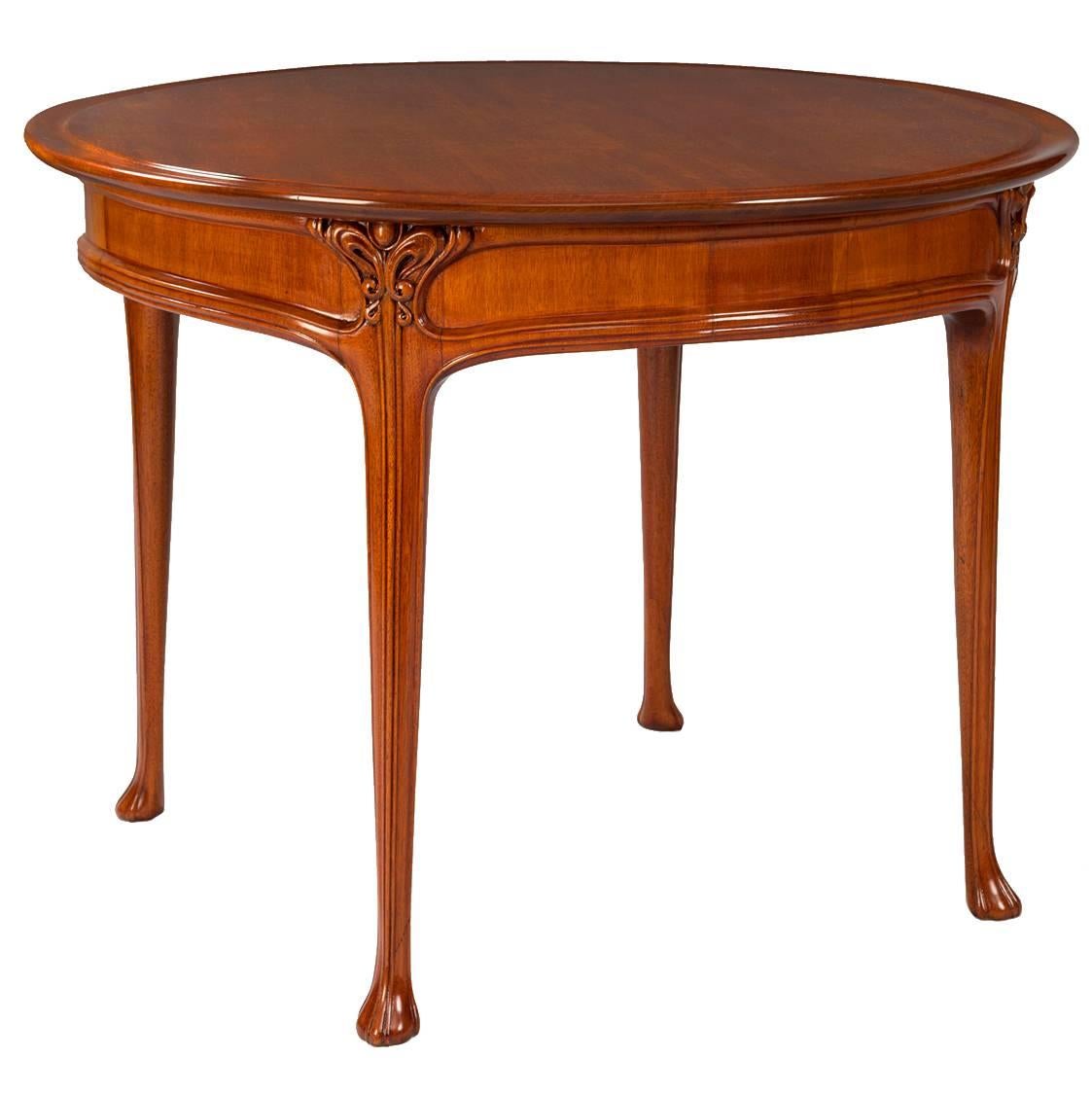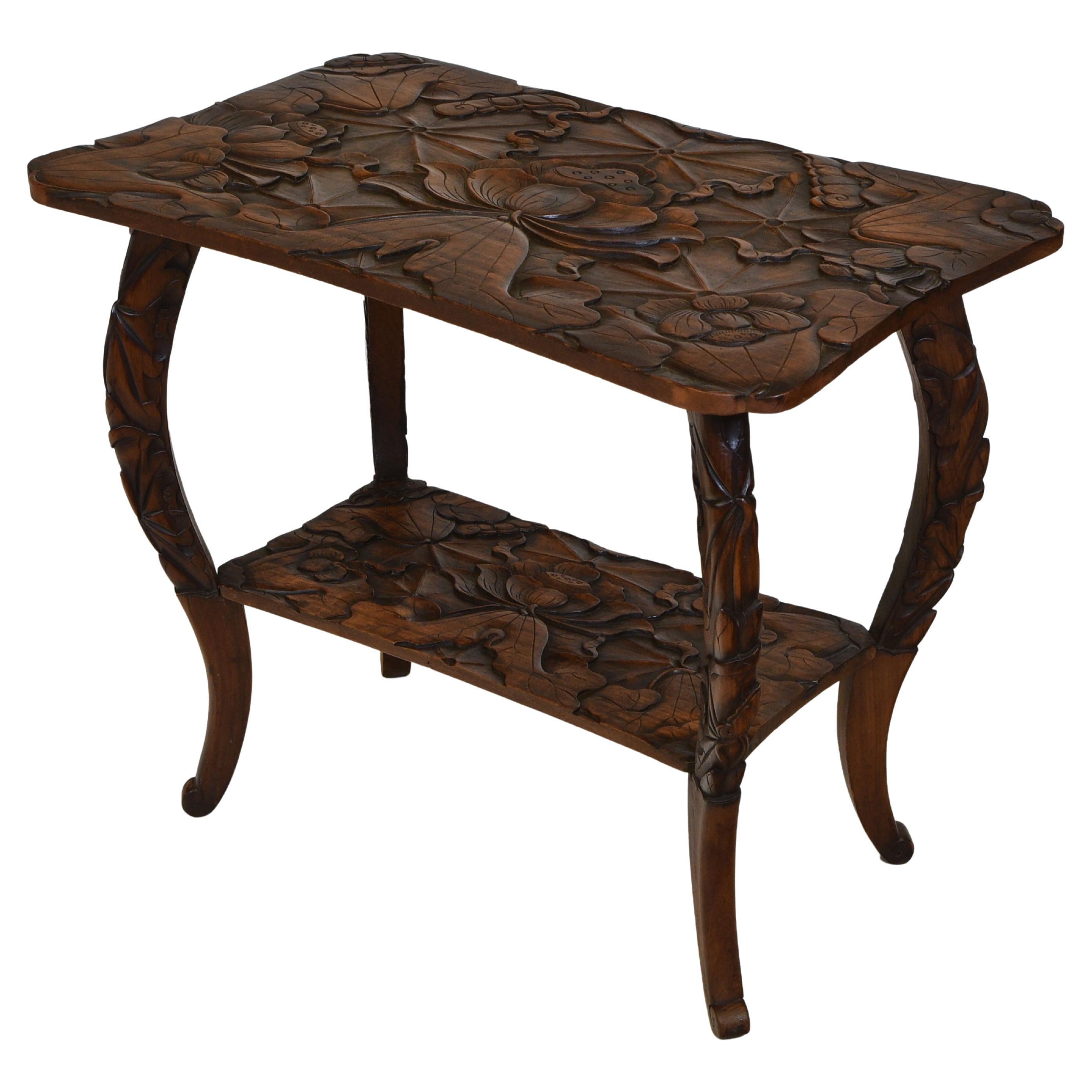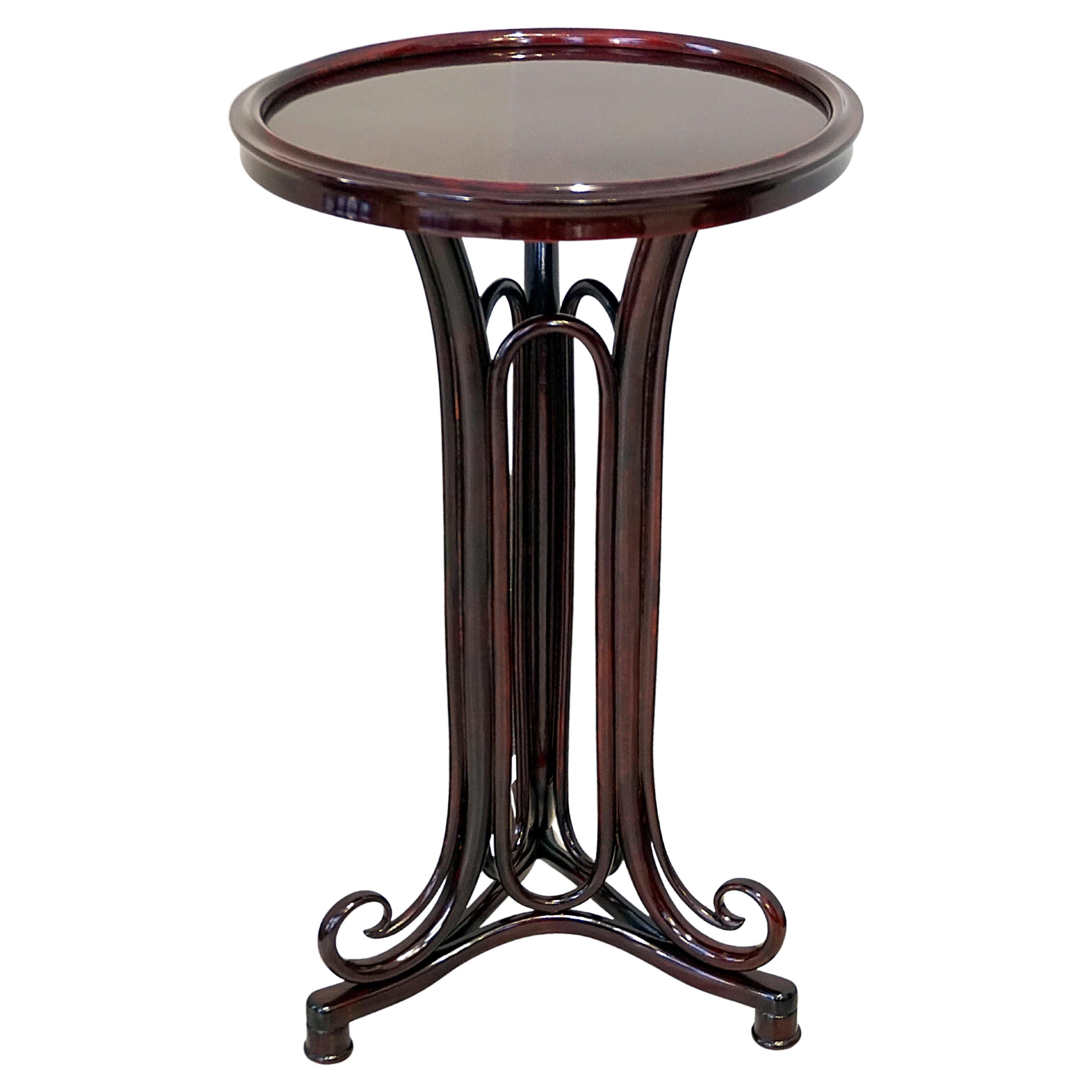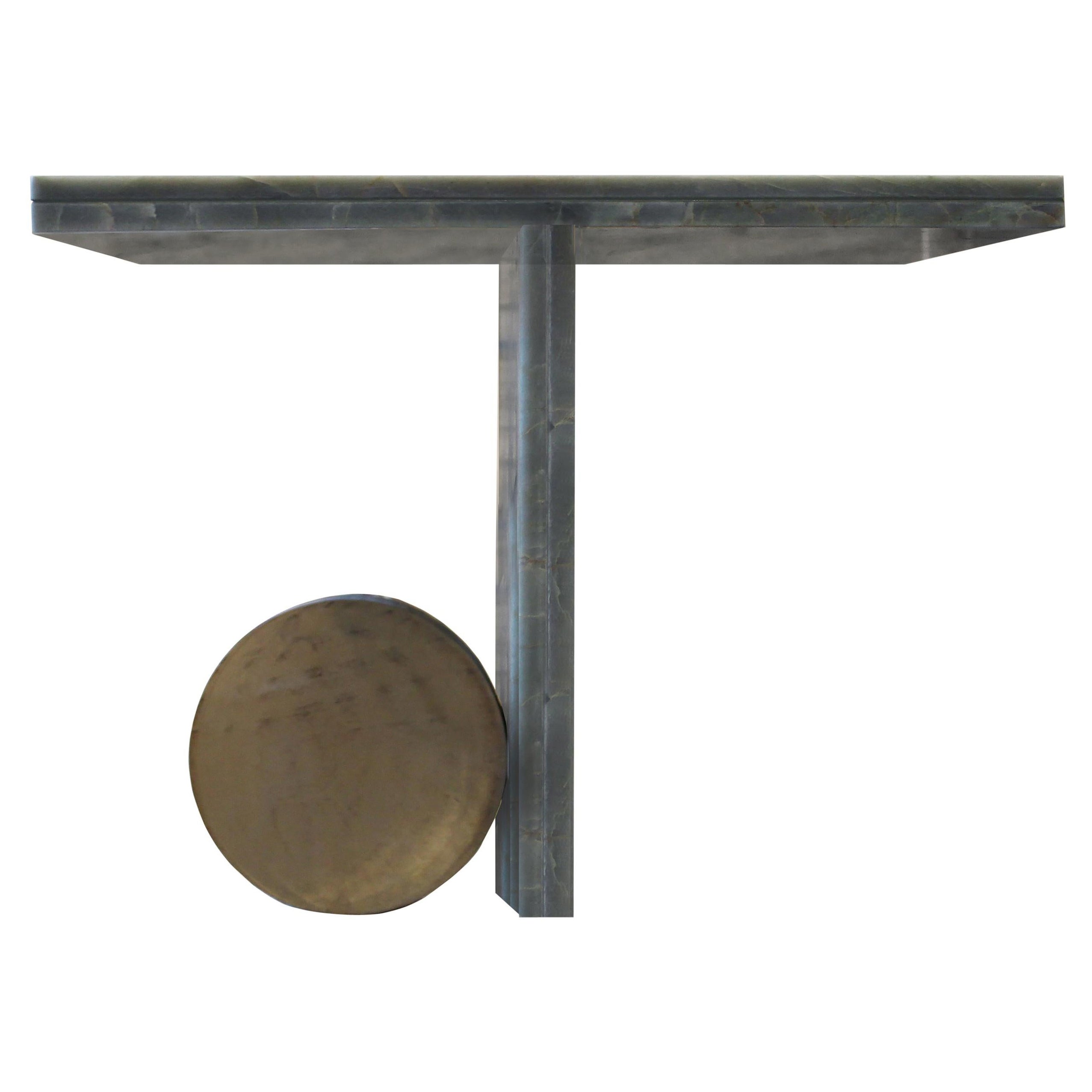Items Similar to Table Maison L´art Nouveau, Bing Atelier Magasins, Siegfried Bing, Art Nouveau
Video Loading
Want more images or videos?
Request additional images or videos from the seller
1 of 15
Table Maison L´art Nouveau, Bing Atelier Magasins, Siegfried Bing, Art Nouveau
About the Item
Incredible Art Nouveau table. With the original label, from Siegfried Bing's or Samuel Bing shop.
We have specialized in the sale of Art Deco and Art Nouveau and Vintage styles since 1982. If you have any questions we are at your disposal.
Pushing the button that reads 'View All From Seller'. And you can see more objects to the style for sale.
L'art Nouveau Bing, Atelier Magasins sold many pieces to the Louvre museum.
It was the most revolutionary store of the time.
It was located at 22 rue de Provence, Paris.
If you want a unique Art Nouveau piece, this should be your choice.
We have specialized in the sale of Art Deco and Art Nouveau styles since 1982.If you have any questions we are at your disposal.
Pushing the button that reads 'View All From Seller'. And you can see more objects to the style for sale.
the Maison de l'Art Nouveau ("House of New Art"), abbreviated often as L'Art Nouveau, and known also as Maison Bing for the owner, was a gallery opened on 26 December 1895, by Siegfried Bing at 22 rue de Provence, Paris.
The building was designed by the architect Louis Bonnier (1856–1946).[2] Unlike his earlier stores at the same location and nearby at 19 rue Chauchat that specialized in Japanese and Asian art objects, the gallery specialized in modern art.[1][3] The original exhibition featured windows designed by Nabi artists, including Henri de Toulouse-Lautrec, and made by Louis Comfort Tiffany.[3] The original interior of the gallery included rooms designed by artists Maurice Denis, Charles Conder, Henry Van de Velde, Albert Besnard, and Edouard Vuillard. Many other artists exhibited works inside the gallery as well, including tapestries, ceramics, stained glass, furniture, metalwork, and prints.
Across the years, Bing held smaller exhibitions that highlighted artists such as Louis Legrand, Eugène Carrière, S. Moulijn, Charles Cottet, and Edvard Munch.
In 1889, Bing expanded his galleries to include an atelier that began producing jewelry, furniture, tapestries, and other art objects.
The fame of his gallery was increased at the 1900 Exposition Universelle, when Bing exhibited his "Art Nouveau Bing" pavilion.[3] In the pavilion, Bing exhibited installations of modern furniture, tapestries and objets d'art by artists Édouard Colonne, Georges de Feure, and Eugène Gaillard.[4] These decorative displays became associated strongly with an artistic style that was becoming popular across Europe, and for which his gallery subsequently provided a name: Art Nouveau.
Why are there so many antiques in Argentina?
In the 1880 – 1940 there was a grate wave of immigration encouraged by the periods of war that were taking place.
1st World War took place between 1914 and 1918
2nd World War took place between 1939 and 1945
The immigrants options were New York or Buenos Aires. Tickets were cheap and in Buenos Aires they were welcomed with open arms, as it was a country where everything was still to be done.
Argentina was the country of new opportunities, labour was needed and religious freedom was assured, in many cases the of the family travel first until they were settled and then the rest of the family members join them.
In the immigrant museum “Ellis Island Immigrant Building” in New York you can se the promotional posters of the boats that would take them to a new life.
Between the years 1895 and 1896, Argentina had the highest DGP (gross domestic product) per capita in the world according to the Maddison Historical Statistics index, this situation arose due to the large amount of food being exported to European countries, which were at war.
The Argentinean ships left the port of Buenos Aires with food, but they returned with furniture, clothes and construction elements, (it´s common to see this the old buildings of the historic neighbourhood of San Telmo, the beams with the inscription “Made in England)”, as well as many markets that were built in Buenos Aires, such us the San Telmo Market, whose structure was brought by ship and afterwards assembled in 900 Defensa Street.
With the great influence of European immigrants living in the country, the children of the upper classes travelled to study in France, resulting in the inauguration of “La Maison Argentinienne”, on 27th of June 1928, in the international city of Paris, which hosted many Argentinians that were studying in Frace.
It´s the fourth house to be built after France, Canada and Belgium, being the first Spanish-speaking one. Still in place today (17 Bd Jourdan, 75014, Paris, France). Many of the children of these wealthy families who attended international art exhibitions, museums and art courses abroad, took a keen interest in the European style. This is why Buenos Aires was at the time referred as “The Paris of South America”.
Between the years 1890 and 1920 more than a hundred Palaces were built on Alvear Avenue the most exclusive avenue in Buenos Aires. Today some of these palaces have been transformed into museums, hotels and embassies.
In the year 1936, the Kavanagh building was inaugurated, it was the tallest reinforced concrete building in South America.
During 1994 the American Society of Civil Engineers distinguished it as an “international engineering milestone”, and it´s now considered a World Heritage of Modern Architecture.
At the time was common to hire foreign architects such as Le Corbusier, who visited Buenos Aires/Argentina in 1929 and in 1948 he drew up the blueprints for a house built in La Plata City (which was declared a World Heritage Site).
In 1947, the Hungarian architect Marcelo Breuer designed “Parador Ariston” in the seaside city of Mar del Plata. After an Argentinean student at Harvard University convinced him to come to Argentina. He worked on an urban development project in the Casa Amarilla, area of La Boca.
The Ukrainian architect, Vladimiro Acosta, arrives in Argentina in 1928 and worked as an architect until que moved to Brazil.
Antonio Bonet, a Spanish architect who worked with Le Corbusier in Paris, arrives in Argentina in 1937, where he carried out several architectural works and in 1938 designs the well-known BFK chair.
Andres Kálnay, of Hungarian origin, made around 120 architectural masterpieces, among which the former Munich brewery stands out, he even made the furniture’s design.
The German architect, Walter Gropius, director of the Bauhaus, lived in Argentina, where he wrote articles for “Sur” magazine and founded in Buenos Aires, an architectural firm with Franz Möller, who was also an architect, where he built two houses.
At the same time several famous designers decided to immigrate to Argentina, among them we can find the well-known French designer, Jean-Michel Frank, who arrived in the country in 1940 and also worked for the Rockefeller family.
Special pieces were made, which were sold exclusively in the country, such as the well-known German company “WMF”, who sold their products by catalogue, which were chosen by the ladies of high society in the list of wedding gifts, as well as the pieces designed by Christofle.
The Swiss sculptor Alberto Giacometti, made special pieces for Argentinean mansions.
In 1904 the first Jansen branch outside Paris was established in Buenos Aires, as the Argentinean clientele demanded a large amount of furniture, from the end of the 19th century to the mid-20th century.
In 1970, the brand Rigolleau Argentina made pieces authorised by Lalique.
The brands Maple and Thompson also set up shop in the country.
The French plastic artist, Marcel Duchamp moved to Argentina in 1918-1919.
Glass signed Gallé, Charder, Leverre, Schneider, Muller and other French firms. They were bought in flower shops and were given to ladies with beautiful floral arrangements.
Some furniture manufacturers travelled to international fairs and bough the patterns to produce the furniture in Argentina, such as the furniture firm Englander and Bonta, who bought the patterns ins Italy.
It is worth mentioning that in Argentina we have the largest community of Italians outside of Italy, as it is estimated that 70 percent of the inhabitants have at least one Italian descendant, followed by Spanish immigrants.
The most Important furniture stores in Argentina:
Comte is founded in 1934 (under the direct management of Jean Michel Frank in 1940).
Nordiska (Swedish company established in 1934).
Churba in 1960, a company that brought foreign designers to present their furniture in the country:
Denmark: (Arne Jacobsen, Finn Juhl, Bender Madsen, Ejner Larsen, Poul Kjaerholm, Hans Wegner)
Sweden: (Hans Agne Jakobsson, Gustavsberg)
United States: (Herman Miller)
Finland: (Lisa Johansson, Folke Arstrom, Tapio Wirkkala, Alvar Aalto, Timo Sarpaneva)
Swedish Factory: (Orrefors)
Italy: (Littala, Vico Magistretti, Emma Gismondi, Gae Aulenti, Angelo Mangiarotti, Elio Martinelli, Gianna Celada, Angelo Mangiarotti, Mario Bellini, Carlo Scarpa)
Finland: (Olivia Toikka)
Plata Lappas (Lappas Silver): a goldsmith shop founded in 1887 in Argentina by Alcibiades Lappas of Greek origin.
In 2019, in Argentina took place “the Art Deco world congress”, in which we participated as hosts invited by Geo Darder, founder of the Copperbridge – Foundation, in which prominent people from all over the world attended to learn about Art Deco in Argentina.
Argentina currently has more than 100 Art Deco buildings and another 90 Art Nouveau buildings throughout the city of Buenos Aires.
Argentina is a country that has not been involved in many wars, which is why it has been a refuge for works of art and antiques from different periods of time, unlike European countries. That is way many collectors, museums and antique dealers from all over the world visit it, you should not miss the opportunity to visit this great country.
Laura Guevara Kjuder, architect.
- Dimensions:Height: 29.14 in (74 cm)Width: 21.66 in (55 cm)Depth: 29.93 in (76 cm)
- Style:Art Nouveau (Of the Period)
- Materials and Techniques:Wood
- Place of Origin:France
- Period:1900-1909
- Date of Manufacture:1900
- Condition:Wear consistent with age and use.
- Seller Location:Ciudad Autónoma Buenos Aires, AR
- Reference Number:
About the Seller
5.0
Vetted Seller
These experienced sellers undergo a comprehensive evaluation by our team of in-house experts.
Established in 1982
1stDibs seller since 2022
21 sales on 1stDibs
Typical response time: <1 hour
- ShippingRetrieving quote...Ships From: Ciudad Autónoma Buenos Aires, Argentina
- Return PolicyThis item cannot be returned.
More From This SellerView All
- France, Table in Wood, 1920Located in Ciudad Autónoma Buenos Aires, CTable Material: wood France We have specialized in the sale of Art Deco and Art Nouveau and Vintage styles since 1982. If you have any questions we are at your disposal. Pushing the...Category
Vintage 1920s French Art Deco Side Tables
MaterialsWood
- France Table in Bronze and Glass, 1920Located in Ciudad Autónoma Buenos Aires, CTable. Material: bronze, glass and mirror. France We have specialized in the sale of Art Deco and Art Nouveau and Vintage styles since 1982. If you have any questions we are at your...Category
Vintage 1920s French Art Deco Side Tables
MaterialsBronze
- France Table in Mirror and Chrome 1920Located in Ciudad Autónoma Buenos Aires, CTable Material: chrome and mirror France. We have specialized in the sale of Art Deco and Art Nouveau and Vintage styles since 1982. If you have any questions we are at your disposa...Category
Vintage 1920s French Art Deco Side Tables
MaterialsChrome
- Frances Table Attributed to Maison Bagues Art DecoBy Maison BaguèsLocated in Ciudad Autónoma Buenos Aires, CAmaizing coffe table. Material: Bronze and glass Style: Art Deco Country: France If you want to live in the golden years, this is the table that your project needs. We have speciali...Category
Vintage 1930s French Art Deco Coffee and Cocktail Tables
MaterialsBronze
- 2 Amaizing Art Deco Tables, France, 1930Located in Ciudad Autónoma Buenos Aires, CExhibited at Original antique show ( Miami beach ) and Palm beach "American International Fine Art Fair (AIFAF)". Two tables Material: wood Style: Art Deco Country: France We have ...Category
Vintage 1930s French Art Deco Tables
MaterialsWood
- Art Deco Table, France, 1930, in WoodLocated in Ciudad Autónoma Buenos Aires, CTable Material: Wood Style: Art Deco France. We have specialized in the sale of Art Deco and Art Nouveau styles since 1982.If you have any questions we are at your disposal. Pushin...Category
Vintage 1930s French Art Deco Serving Tables
MaterialsWood
You May Also Like
- Small Art Nouveau Walnut Side TableLocated in Darmstadt, DEThe side or salon table is made of walnut and has a beautiful Art Nouveau design, dates from the Art Nouveau period circa 1900. The columns are with brass base. In very good restored...Category
Antique Early 1900s German Art Nouveau Side Tables
MaterialsWalnut
- Louis Majorelle French Art Nouveau TableBy Louis MajorelleLocated in New York, NYA French Art Nouveau mahogany two-tiered square table by Louis Majorelle, featuring featuring a detailed border on the top tier and gilt bronze sabots on the legs. A similar ta...Category
Early 20th Century French Art Nouveau Side Tables
MaterialsBronze
- Edouard Colonna French Art Nouveau Side TableBy Edouard ColonnaLocated in New York, NYA French Art Nouveau mahogany side table with carved decoration in an abstract curvilinear vegetal motif by Edouard Colonna (1862-1948). Circa 1900. Along with Louis Comfort Tiffany, Edouard Colonna was one of the main designers who worked for Siegfried Bing and who, under Bing's guidance, was responsible for the creation of what is known today as the Modern Style, or Art Nouveau. Colonna is remembered for his tasteful elegance and his use of abstract forms to create a graceful linear rhythm and dynamic intertwining lines. While he occasionally started with a floral motif, Colonna abstracted nature to create the impression of a flower bud or bloom held within a carefully constructed geometric scheme. This design scheme is evident in the delicate carvings ornamenting each leg of the table and in the overall rhythm of the piece. Colonna furniture, jewelry and designs for small objects like scarf and money holders...Category
Early 20th Century French Art Nouveau Side Tables
MaterialsMahogany
- Liberty & Co Japanese Carved Side Table Art NouveauBy Liberty & Co.Located in Norwich, GBA Japanese fruitwood carved side table, retailed by Liberty & Co. Circa 1900. These tables were commissioned by Liberty & Co, and hand-carved in Japan. The firm imported Middle Ea...Category
Antique 1890s Japanese Art Nouveau Side Tables
MaterialsFruitwood
- Thonet Vienna Art Nouveau Saloon Reading Table No 1 Mahogany Stained circa 1900By Gebrüder Thonet Vienna GmbHLocated in Vienna, ATElegant saloon table with a round, original table top with edging to prevent rolling, decorative and elaborate bentwood struts and applications with volutes on the three-sided foot. Beautifully designed, handcrafted furniture with bentwood elements, beech, stained mahogany, shellac hand-polished. Manufactured by Thonet Brothers...Category
Antique Early 1900s Austrian Art Nouveau Tables
MaterialsBeech
- O Side Table by dAM AtelierLocated in Geneve, CHO side table by dAM Atelier Dimensions: L 60 x W 60 x H 60 cm Materials: Green "J'adore" quartzite, bronze dAM atelier is a duo of young Italian architects sharing the passio...Category
2010s Swiss Modern Tables
MaterialsBronze
Recently Viewed
View AllMore Ways To Browse
Tiffany Art Nouveau
1960s Art Nouveau
Antique Jewelry Table
Art Nouveau Dealers
New Art Nouveau Chair
Art Nouveau Flower Stand
Hungarian Antique Art
Hungarian Art Nouveau
Antique Nouveau Chairs
Antique Art Nouveau Chairs
Antique Jewlery Table
Canadian Historical Art
Antique Furniture Estimates
Art Nouveau Deco Jewelry
A Johansson Art
Art Nouveau Ladies Furniture
Christofle Art Nouveau
Art Nouveau Travel Poster

